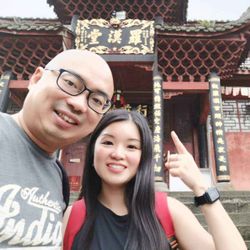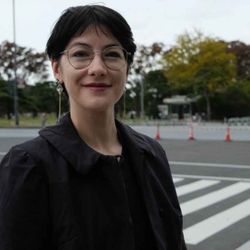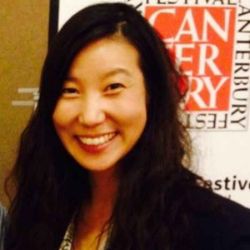Share

Tourism Geographies Podcast
A state-of-the-art-review of animals in tourism: key debates and future directions
https://doi.org/10.1080/14616688.2024.2342462
Abstract
Alongside the growth in the animal-based tourism industry, the volume and diversity of research on related issues has increased considerably over the last half century. The extant literature explores a very broad range of themes on animals in tourism. Several scholars before us have provided useful analyses and summaries of the existing knowledge: the dominant themes; the various research methods used by researchers; the geographic spread of research contexts; and stakeholder roles and perspectives, among other categories. This brief state-of-the-art review, which aims to build on the existing work, is not intended to be exhaustive. Instead of merely rehashing what is addressed in the literature, we identify a few central and emerging debates on animals in tourism in the post-2000 era, organised under three broad categories: (i) human-animal relations (animal ethics); (ii) sustainability in animal tourism; and (iii) the growing influence of social media and its hashtag movements. The conclusion draws attention to some notable gaps in the literature, on which we invite further exploration. These include the opportunities and risks presented by Artificial Intelligence (AI) and other technologies; divergent cultural lenses in interpreting the role of animals in tourism; and animals in tourism education curricula. We hope that this review enlivens interest among tourism geographers around these critical areas.
More episodes
View all episodes

27. Indigenous Peoples’ rights and tourism: thinking about colonisation
40:34||Season 3, Ep. 27https://www.tandfonline.com/doi/full/10.1080/14616688.2024.2395469AbstractAdvancement of Indigenous rights through tourism requires practitioners and researchers to think carefully about the roles and responsibilities of Indigenous methodologies and decolonising work. In adopting a stance of refusing colonisation, reflections on tebrakunna country are aimed at introducing ways for Indigenous scholars to accommodate both cultural protocol and western scholarship requirements without compromise.
26. Assembling tigers, dragons and hells: relational materialist geographies of curated themed spaces
28:54||Season 3, Ep. 26https://www.tandfonline.com/doi/full/10.1080/14616688.2024.2412551AbstractThemed spaces and theme parks constitute of significant human-based desires and linguistic discourses that stabilises/destabilises their social identities and materialities. This paper draws on a relational materialist perspective to examine Singapore’s longstanding themed space, Haw Par Villa, to offer insights into its social and material stability and instabilities. Relational materialism facilitates observations and analysis of interactions of humans and their material worlds on the same ontological plane where human’s agencies are de-centred. Social and material objects are seen to operate in mutually constitutive fashions. The development of a site/theme park and its larger country context are conceptualised here as ‘assemblages’ using DeLanda’s brand of assemblage theory to reveal the operations of human-based ‘desires’ alongside material agencies. Specifically, the desires of the founder and the key discourses related to the founder’s name helped constitute and stabilise the social identity and materiality of the Haw Par Villa through its eventful history of physical destruction, reconstruction, rebranding and reimagining. Despite his eventual non-involvement with Haw Par Villa’s management due to his passing, the founder’s desires and discourses linger on in various forms, resulting in subsequent attempts to rework the identity and materiality of this themed space failing if the attempts are not congruent on some level with the founder’s desires and discourses. This resulted in the failure of first, the state and, subsequently, private endeavours in re-constituting the themed space. In doing so, this paper contributes to a socio-material understanding of the resilience and sustainability of themed spaces.
25. Regenerative tourism as a post-disaster response: lessons from Cammino nelle Terre Mutate
38:15||Season 3, Ep. 25https://www.tandfonline.com/doi/full/10.1080/14616688.2024.2381062AbstractDisasters, resulting from natural hazards, have a profound impact on communities and places, revealing vulnerabilities while shaping unique identities. Regenerative tourism offers promise in aiding recovery and revitalization, supporting local economies, and fostering a transition to alternative development approaches. Drawing on emerging conceptual frameworks in regenerative tourism, this paper proposes their application in post-disaster contexts. It explores walking itineraries as potential regenerative practices, embodying spiritual and political acts of re-signifying place. Using the Cammino nelle Terre Mutate case study, which traverses rural villages in central Italy struck by violent earthquakes in 2009 and 2016–2017, the study examines the application of regenerative thinking in post-disaster tourism practices. It illustrates how walking itineraries, when guided by regenerative principles, can facilitate the coexistence of humans and the environment, which includes natural hazards as intrinsic components of a dynamic living system. This study highlights the role of communities in enhancing system capacity, revealing the inherent potential of affected areas beyond recovery, and paving the way for tourism as part of a regenerative process. However, tourism’s effectiveness depends on nurturing a regenerative mindset and harnessing transformative capacities to stimulate local economies and imaginaries, prompting a re-evaluation of tourism’s role in local development.
24. A holistic and pluralistic perspective for justice through tourism: a regenerative approach
41:44||Season 3, Ep. 24https://www.tandfonline.com/doi/full/10.1080/14616688.2024.2372114AbstractJustice is integral in transformative tourism approaches that call for a complete restructuring of the travel and tourism sector worldwide. While justice through alternative tourism models promotes responsible, sustainable transitions in the tourism sector, these models are frequently informed by a perceived binary between the social and the environmental and long-held patterns of West-centric thought and West versus ‘the rest’ power dynamics, found both in tourism theory and practice and within justice frameworks. In this article, we explore the potential of the regenerative development paradigm to bridge these divides and adopt a pluriversal lens to devise a more just practice of tourism. The holistic, transformative tenets and pluralistic perspective of regenerative development and tourism are used to build a novel framework for justice. The framework’s capacity to analyse, unlock and catalyse place regeneration in different knowledge systems and restore just relationships has been leveraged in two rural areas in Colombia and Ecuador. Collecting data through mixed qualitative methods that combine reflexive ethnography with in situ and online interviews, we identified actions taken to address local inequalities and challenges while fostering pathways to the systemic transformation of residents’ livelihoods. These place-specific actions inspired by ancestral traditions have revitalised the areas’ ecosystems, including local human communities and the latter’s tourism activities. The discussion of results examines the potential of pluriversal regenerative development and tourism principles grounded in diverse knowledge and ethics frames to guide actions for systemic social and environmental justice.
23. Backpacker tourism: definitions, methods, debates
18:19||Season 3, Ep. 23https://www.tandfonline.com/doi/full/10.1080/14616688.2024.2417858#abstractAbstractThis commentary explains how backpacker research has been developed within and beyond tourism geography in the past 25 years. Based on a selective review of the backpacker literature, it identifies three enduring issues to form the basis for a future research agenda. Firstly, the question of how to define backpackers. Secondly, the methods used to understand backpacking. Thirdly, the debate regarding whether or not backpackers and working holiday makers are synonymous. The paper argues the lack of a shared definition of backpackers distorts perceptions of their impacts, particularly around the question of economic benefits. There are implications here for the tourism industry, the agriculture industry, the academy, and all who depend upon backpackers and/or working holiday makers for their livelihoods.
22. Place agency and visitor hybridity in place-making processes at sacred heritage sites
28:11||Season 3, Ep. 22https://www.tandfonline.com/doi/pdf/10.1080/14616688.2024.2443897AbstractThis paper investigates the relational nature of place-making at sacred heritage sites, taking Kyoto, Japan, as a case study to analyse how domestic tourists construct meaning in interaction with the spatial environment. Based on 11 semi-structured online interviews with Japanese spiritual tourists, an in-depth exploration of participants’ interactions with and co-construction of sacred spaces was conducted. The analysis centres on two themes. First, visitors embody fluid, overlapping roles that blend secular and sacred motivations, moving beyond fixed categories of insider or outsider. These hybrid roles reflect the fluidity of visitor identities and intentions in their engagement with sacred sites. Second, the paper highlights the agency of the places themselves in place-making processes. Sacred sites such as Kiyomizu-dera and Fushimi Inari Taisha are not passive backdrops. Rather, they are active participants that shape visitor experiences and interactions through their physical, natural, and sensory affordances in the form of: (1) a bridge to the supernatural; (2) human-made materiality; (3) natural materiality; (4) atmosphere. Consequently, we conclude that a relational understanding of place-making at sacred sites should recognise the complex interplay between the fluid role of visitors and the active agency of the sites, a process in which both human and non-human actors co-construct the meaning and experience of place.
21. Religious Tourism
17:46||Season 3, Ep. 21https://www.tandfonline.com/doi/full/10.1080/14616688.2024.2423168AbstractReligiously motivated travel, such as pilgrimages, is one of the oldest forms of tourism. Over the past fifty years, religiously motivated tourism has experienced significant growth. Religious tourism has evolved in diverse contexts and locations, and it is increasingly explored by scholars from various fields. Existing literature on religious tourism suggests a growing diversification of visitors, who are driven by the diminishing significance of traditional religious beliefs in contemporary societies. Scholars have indicated a global decline in engagement with organised religions, possibly attributed to modern scientific knowledge, rational thinking, and secularisation. Consequently, there is a growing trend where individuals travel to religious and pilgrimage sites that hold personal significance or meaning for them. In the post-pandemic context, more attention should be given to the wellness aspects of religious tourism, including the mental, physical, and spiritual health benefits. Religious tourism, especially in developing regions and remote areas, has been viewed as part of economic diversification strategies. To provide pathways for how religious tourism can actually benefit the local community and economy in practice, there is a need for more in-depth research and analysis. More critical research can explore how economic development influences or impacts poverty alleviation, sustainability, accessibility, and environmental impacts. For future research, beyond tourists’ perspectives, more attention on the perspectives of communities and local stakeholders is required. Since Western contexts, conceptualisations, methodologies, and interpretations still dominate the field, it is essential to incorporate holistic perspectives and understandings from a broader body of scholars. Encouraging local scholarship is important to foster more balanced discussions within this field of study. Methodologies should expand and become more creative, moving beyond quantitative studies and incorporating more fieldwork. Scholars need to address practical problems related to religious tourism sites by collaborating with policymakers, tourism operators, local communities, and religious associations.
20. Tourism at the end of the world: places to play as kinopolitical constellations
30:31||Season 3, Ep. 20https://www.tandfonline.com/doi/full/10.1080/14616688.2024.2360629AbstractThis commentary reflects on the geopolitical and the kinopolitical intersections of tourist places, performances, and placemaking. All tourism can be said to be geopolitical, as well as kinopolitical. Tourism involves uneven relations of (im)mobilities that are shaped by and shaping of state power, state borders, national identities, and political alliance and conflicts. Geopolitical relations affect who can ‘play’ at being a tourist, where they can play, and how places rise and fall in the geopolitical theatre of desirability, security, and affordability for different types of tourism. Kinopolitical relations affect how these relations play out in actual places and embodied performances. The current inequalities of the global economy foster geopolitically uneven tourism constellations, with crucial societal and ecological impacts that are the core question of the future of tourism within a system of kino-geopolitics.
19. Destabilising the home: place making, dark tourism and the spectral
21:33||Season 3, Ep. 19https://www.tandfonline.com/doi/full/10.1080/14616688.2024.2412547AbstractGhosts, hauntings and the spectral are intrinsically linked to sites of dark tourism. Supernatural stories commonly emerge in places connected with tragedy, death and the macabre, forming spectral geographies in which the past and present intertwine. Visiting places of supernatural significance has long been of interest to tourists (Holmes and Inglis, 2004), however, in the last two decades a considerable ‘ghost-hunting’ subculture has emerged alongside commercial events and tourist attractions dedicated to engaging visitors with spectral possibilities (Eaton, 2020; Ironside, 2018). As a result, places associated with ghost folklore including private homes, hotels, and heritage buildings, have become popular travel destinations due to their supernatural associations. Film and television media are often credited with the popularisation of haunted places (Edwards, 2019; Hill, 2010); however, more recently web-based and social media platforms have become spaces for promoting, reporting, and sharing paranormal experiences. In this paper, we explore the construction of spectral geographies, specifically haunted houses, through online narratives. By drawing upon textual analysis of both marketing and online reviews we analyse two cases, 30 East Drive and The Ancient Ram Inn, and explore how these private homes have been transformed into sites of dark tourism through digital storytelling and discourse. Through our analysis we consider how personal experience, intertextuality, and uncanny signifiers contribute to a form of placemaking through digital media and storytelling (Halegoua & Polson, 2021), experiential consumerism (Pine & Gilmore, 2011) and an evolving spiritual quest culture (Eaton, 2015).